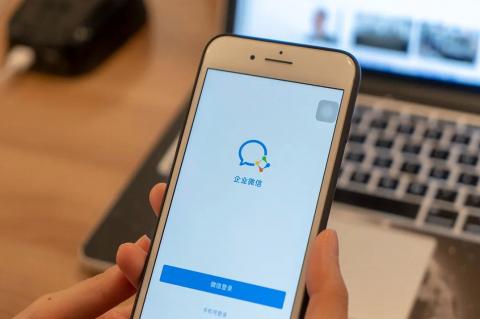
 0
0
Traveling to China During COVID-19: What Are the Latest Quarantine Rules?
08/20 Updates:
China appeared to get the coronavirus under control nearly a year ago. However, variants of the coronavirus have appeared recently. In the last few weeks, at the height of the summer travel season, Delta has been detected in at least 26 Chinese provinces and municipalities.
In response, China has fallen back on familiar methods. Authorities still kept tight border controls, millions have been tested, cities have gone into lockdown, while transport links in some areas have been cut.
In consequence, TopTutorJob is going to give you an update on the latest quarantine requirements of China, for both international and domestic travelers.
| Province/City | International Traveler | Domestic Traveler | |
| From Medium and High Risk Area | From Areas Risk Level Has Not Been Defined | ||
| Zhejiang | "14+7+7": 14 days of centralized quarantine, 7 days of home isolation, and 7 days of daily health monitoring. | "14+7": 14 days of centralized quarantine and 7 days of daily health monitoring; Complete COVID-19 test within 24 hours. | Actively report the situation and provide negative COVID-19 test results (tested within 72 hours); The associated community will monitoring the personnel. |
| Shanghai | "14+7": 14-day quarantine plus 7-day community health monitoring for new arrivals. | Report to the communities within 12 hours after arrival. A 14-day centralized quarantine is required. | There is no specific regulation for people come from low risk areas. |
| Jiangsu | "14+14": a 14-day centralized quarantine and 14-day home isolation are required. | Living in medium and high-risk areas in Jiangsu Province: a 14-day of centralized quarantine plus a 7-day home isolation; Come from medium and high-risk areas in other provinces: a 14-day centralized quarantine. | N/A |
| Sichuan | "14+7": 14 days of centralized quarantine plus 7 days of home isolation. | Qurantine for 14 days. If the requirements for home isolation are not fit, a centralized quarantine will be conducted. | Provide negative COVID-19 test results tested within 48 hours, plus a 14-day of community management. |
| Beijing | "14+7+7": after the 14-day quarantine period expires, they will continue to be quarantined at home or in a centralized area for another 7 days, followed by another 7 days of health monitoring. Personnel entered China at other ports, then came to Beijing after 21 days: a 7-day health monitoring is required after arrival. and be monitored for 7 days after arrival. Those who have arrived in Beijing in less than 21 days: quarantined at home or in centralized centers for 7 days, and then undergo health monitoring for another 7days. | Strictly control the entry of people from medium and high risk areas into Beijing. Flights, trains and passenger trains from those areas to Beijing will be suspended. | People come from low risk areas are allowed to enter into Beijing in an orderly manner with the green health code provided, while the temperature is normal and personal protection is in place. |
| Guangdong | "14+7": a 14-day centralized quarantine and a 7-day community health monitoring are strictly implemented.Personnel entered China at other ports, then came to Guangzhou after 14 days: quarantined at home or in centralized centers for another 7 days. | Personnel come from medium and high risk areas: 14 days quarantine are required;Personnel come from the cities where high risk areas are located in: a 7-day quarantine at home plus a 7-day home health monitoring;Personnel come from the cities where medium risk areas are located in: a 14-day self-health monitoring should be carried out. | All people come or return to Guangdong from other provinces are required to undergo a COVID-19 test once they arrive in Guangdong. |
-----------
With the continuous increase of imported COVID-19 cases in various provinces, the China National Health Commission announced on May 14, 2021, to update the COVID-19 prevention and control plan revised by China State Council.
The revision is to strengthen the epidemic prevention of key areas and groups, as well as to control imported cold chain food and goods. According to the plan, the conditions for releasing quarantine are stricter. In order to strengthen the health management of all inbound passengers and their close contacts, two tests with different nucleic acid detection reagents done by different institutions should be collected when quarantine ends.
In addition, the quarantine policies for inbound travelers keep upgrading in most Chinese cities. In this article, TopTutorJob is going to give you an update on the latest quarantine requirements in several provinces and cities.
Shanghai: "14+7"
The Office of Epidemic Prevention and Control in Shanghai has released information to strength the health management of international travellers. Effective from May 16, 2021, all arrival passengers are required to undergo 14 days quarantine and 7 days health monitoring in community. During this period, they will get tested at least 6 times.
Beijing: "14+7"
Beijing has increased the quarantine period from "14+7" to "14+7+7". All inbound passengers arriving in Beijing are required to have a 14-day centralized quarantine. After that, they need to quarantine themselves for another 7 days at home or hotels. The new policy requests an additional self-health monitoring period for 7 days. During this time, they can go out as usual, but are not allowed to participate in group activities.
Passengers bounding for Beijing but transiting through other domestic provinces will need to undergo 21 days quarantine first on arrival before they are allowed to enter Beijing. However, a 7-day self-health monitoring period is required once they arrive in Beijing.

Guangdong: "14+7"
A 14-day centralized quarantine plus a 7-day home isolation are mandatory to all inbound travelers. Four nucleic acid tests will be conducted during the quarantine period.
Shenzhen: "14 or 7+7"
Shenzhen loosened the home isolation policies in March, 2021. The city would only require 14 days of centralized quarantine. If the nucleic acid test result shows negative after 14 days, the person can be released.
For those international arrivals who destined for Shenzhen, if they test negative and meet the required conditions for home isolation health observance, they can apply for a "7+7" quarantine mode. The period of centralized quarantine is shortened to seven days, plus another 7 days for home isolation.
Jiangsu: "14+14"
Jiangsu requires 14 days centralized quarantine and then 14 days home isolation for all arrival passengers.
Zhejiang: "14+7"
Zhejiang has shorten the quarantine period for international travellers from "14+7+7" to "14+7". All arrival passengers will undergo a mandatory 14-day centralized quarantine and 7 days home isolation. The person will be given a red health code for the first 14 days, then it turns to yellow in the following 7 days. When quarantine period ends an additional seven-day health monitoring in community will not be conducted to the person with negative COVID-19 test result.
Sichuan: "14"
Since March 2021, all passengers regardless of their nationality and place of departure, are required to undergo a 14-day centralized quarantine. There is no home isolation requirement anymore. They will receive nucleic acid tests three times during quarantine period. The final test needs to be verified by at least two reagents from different testing institution, an antibody test is also required at the end of quarantine.
TTJ also provides some latest information about the visa rules and vaccine policies. If you have any needs, please sign in to leave your comments.






